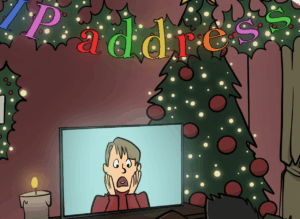 There was a time around 2009 when you couldn’t talk about Zynga without also talking about Facebook. Back then, FarmVille, CityVille and CafeWorld were beyond ubiquitous.
There was a time around 2009 when you couldn’t talk about Zynga without also talking about Facebook. Back then, FarmVille, CityVille and CafeWorld were beyond ubiquitous.
But Facebook wasn’t mentioned once on Tuesday during Zynga’s third-quarter earnings call.
That’s partially because Facebook’s users are increasingly mobile, with 1.39 billion monthly actives out of 1.55 billion total users, with desktop usage on a steep decline. That unstoppable trend has a direct impact on Zynga’s user base, which stands at 19 million, down 21% since Q2 and 27% year over year (YoY).
But Zynga wants take control over its own destiny with several new apps, including Wizard of Oz Slots, Words with Friends and Zynga Poker, which is the top social casino game in the poker category in Apple’s App Store.
CEO Mark Pincus, who returned to the company he founded in April after a several-year hiatus, laid out Zynga’s go-forward strategy during its Q3 earnings call. The plan is threefold: “First, it’s to focus on a broad player network. Second, it’s participation across multiple categories and genres. And third, it’s developing leading mobile franchises.”
Although Zynga clearly has its work cut out – and the space is more competitive than ever, especially in light of Activision’s $5.9 billion monster acquisition of King Digital – the last several quarters have been a bright spot, especially in terms of advertising.
Overall bookings were up 39% YoY, with more than 50% of US mobile network ad bookings driven through RTB channels. This yielded an 80% YoY increase in average daily advertising bookings for games with ads. Private marketplace bookings increased 2.5 times from Q2.
Zynga also recently launched Studio E, an in-house creative development agency of sorts, which released its first ad unit in early October, dubbed SponsoredPlay. It allows advertisers, including Naked Juice and Progressive Insurance, to create and insert branded levels into the the midst of gameplay.
Clorox, for example, gave players the opportunity to harvest the ingredients needed to make a salad, after which they were linked out to the Hidden Valley Ranch recipe site. Players spend between 15 and 20 seconds with the unit, Zynga said, which is five to seven times the norm for static ads.
“We don’t start with the advertiser; we start with the player. Player-first design has more value to the user, to the advertiser and to us in terms of monetization,” said Amy Gershkoff, who joined Zynga as the company’s first-ever chief data officer earlier this year after stints as eBay’s head of customer analytics and insights and WPP’s chief data scientist.
Reporting to Gershkoff is Julie Shumaker, VP of global sales and Studio E.
AdExchanger Daily
Get our editors’ roundup delivered to your inbox every weekday.
Daily Roundup
“If you talk to most heads of sales, I imagine none of them report to the chief data officer,” Shumaker said. “We’re putting our money where our mouth is.”
Gershkoff and Shumaker spoke with AdExchanger about Zynga’s ad business.
 AdExchanger: How does Zynga approach advertising?
AdExchanger: How does Zynga approach advertising?
JULIE SHUMAKER: We started our ads business in 2011.
Before that, Zynga only had two mechanisms for brands to participate. The first was performance marketing through Facebook offers walls: “Click here to get a discount on 1-800-Flowers”-type things. The second piece, which made up the lion’s share, was deep sponsored integrations in a classic product placement sense. American Express sponsoring farmers in FarmVille, for example.
We used these products to test the waters of player enthusiasm, and from there, we went looking for mechanisms to help marketers buy more quantifiable, efficient media.
And what form did that take?
JS: In 2012, we started to bring IAB standard media into the business, taking advantage of the natural breaks in the functions of our games with interstitial ads. The following year, Ben Webley [VP of ad monetization and business operations at Zynga] was fundamental in establishing an efficient program to allow Zynga to capture the right demand source at the right moment and be able to scale that through programmatic, as well as the direct demand that my team provides.
And then, in 2015, we launched SponsoredPlay.
Our mission is to grow our ad business and be very player-centric at the same time.
How do you strike that balance?
AMY GERSHKOFF: Any advertising product has to be a marriage among three things: creative, targeting and execution.
Studio E and SponsoredPlay are about creating and optimizing an engaging experience. In terms of targeting, the data scientists and analytics people on my team sit down with both the advertisers and the creative team to make sure that the science and the creative aren’t happening in isolation. Finally, our monetization team runs all the campaigns, the optimization of inventory and yield management.
Who are your advertising partners?
JS: MoPub is our primary SSP, but we’re also doing programmatic direct deals with a variety of other SSPs. It also depends on the marketer’s choice of DSP. If a client isn’t hooked into MoPub, we’ll tip over the waterfall to AdX or whichever platform that client is connected with.
In-house, we’re primarily focused on data, targeting and ad serving while leveraging the expertise in the programmatic space of the MoPubs and the AdXs of the world.
What’s the data strategy at Zynga?
AG: Beyond advertising, we’re always thinking about how to leverage data and analytics to create engaging experiences for players. In some games, that’s dynamic level-tuning to ensure that you’re matching the right level of difficulty with a given player at a given time. Localization is also important. If you’re playing in France, for example, the words we surface should be in French.
All of that is targeting, and in a sense, advertising is just one sub-use case of our larger strategy.
Are advertisers interested in gaming?
JS: The mobile space does not command a commensurate amount of ad revenue compared to time spent. But there isn’t an auditing company in the world that has mobile gaming at less than 30% of total time spent. In the US, unique visitors spend roughly six and a half hours with Zynga every month. We’re just scratching the surface of what we can do to help the marketplace be more enthusiastic about this category, given how much time people spend with it.
AG: Coming from the agency side at WPP, I had top brands as my clients, and I can tell you that Fortune 100 brands are getting increasingly sophisticated when it comes to media planning and buying. They’re looking for a truly multichannel approach.
I believe we’re going to see a dramatic increase in the advertising dollars spent in mobile gaming over the next couple of years, in large part because that’s where people are spending so much of their time, and smart advertisers will use data and analytics to go where the consumer is.
But is there a perception that game audiences don’t have the demographics brands are looking for?
JS: The general population on mobile looks exactly like the general population in mobile gaming. Nielsen just did a study that found no statistically relevant difference between the two. That’s quite different than other gaming platforms.
AG: Take Words with Friends, where we have 18 million unique users every month and 14 million daily actives. These are people from high-income households. We know them, and the game is part of their daily routine.
How is Zynga handling the move from desktop to mobile?
JS: From a brand advertising perspective, the most challenging thing has been managing expectations. We went from a time when we could add a Frito-Lay corn chip to a FarmVille corn crop and have 1 million shares in the first day, to a mobile marketplace with high fragmentation of usage.
Even though Zynga maintains its leadership position, in terms of total reach on mobile in the US year over year, we still have a smaller number of unique users per game in the total category.
This interview has been edited for clarity and length.













